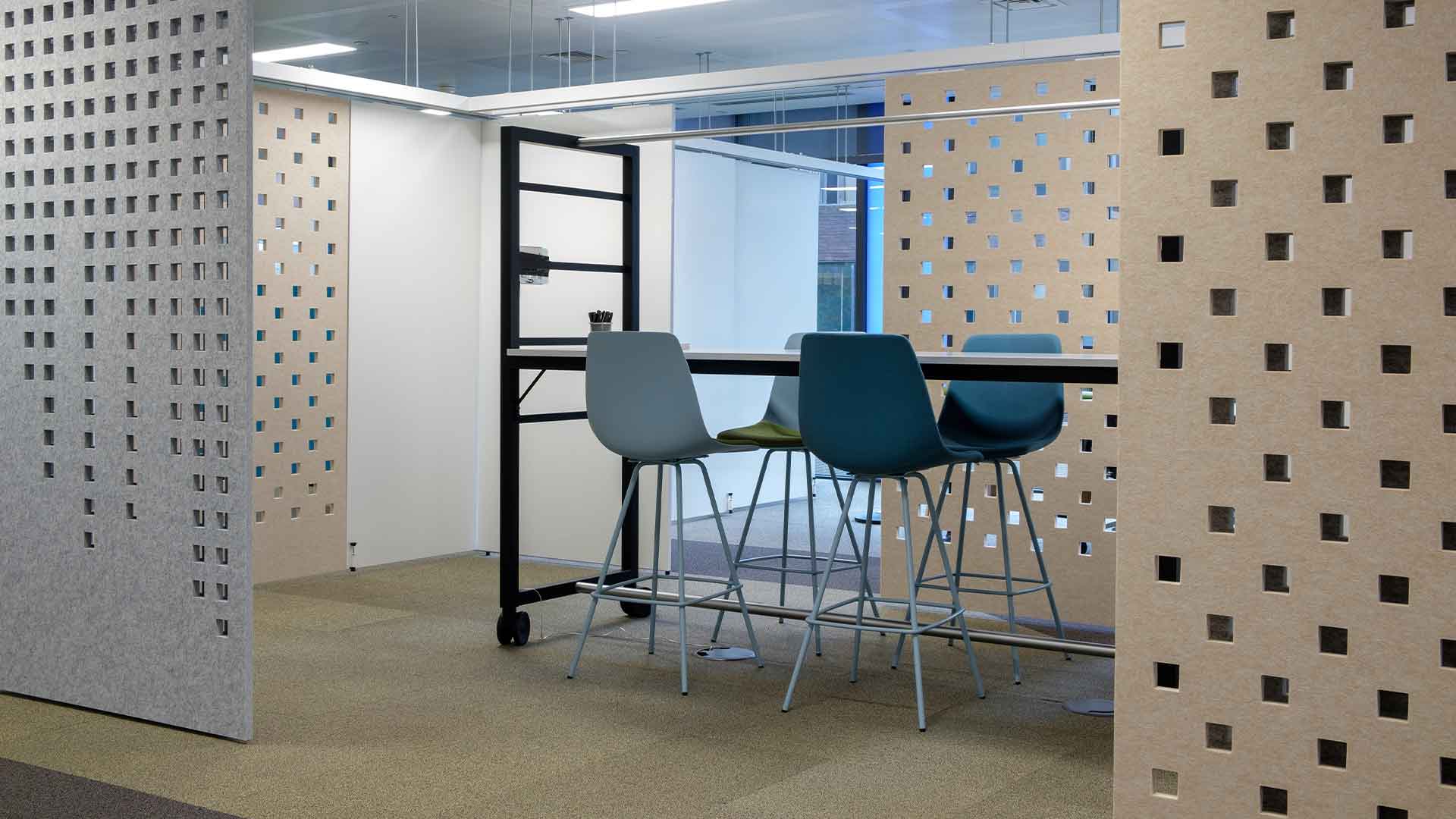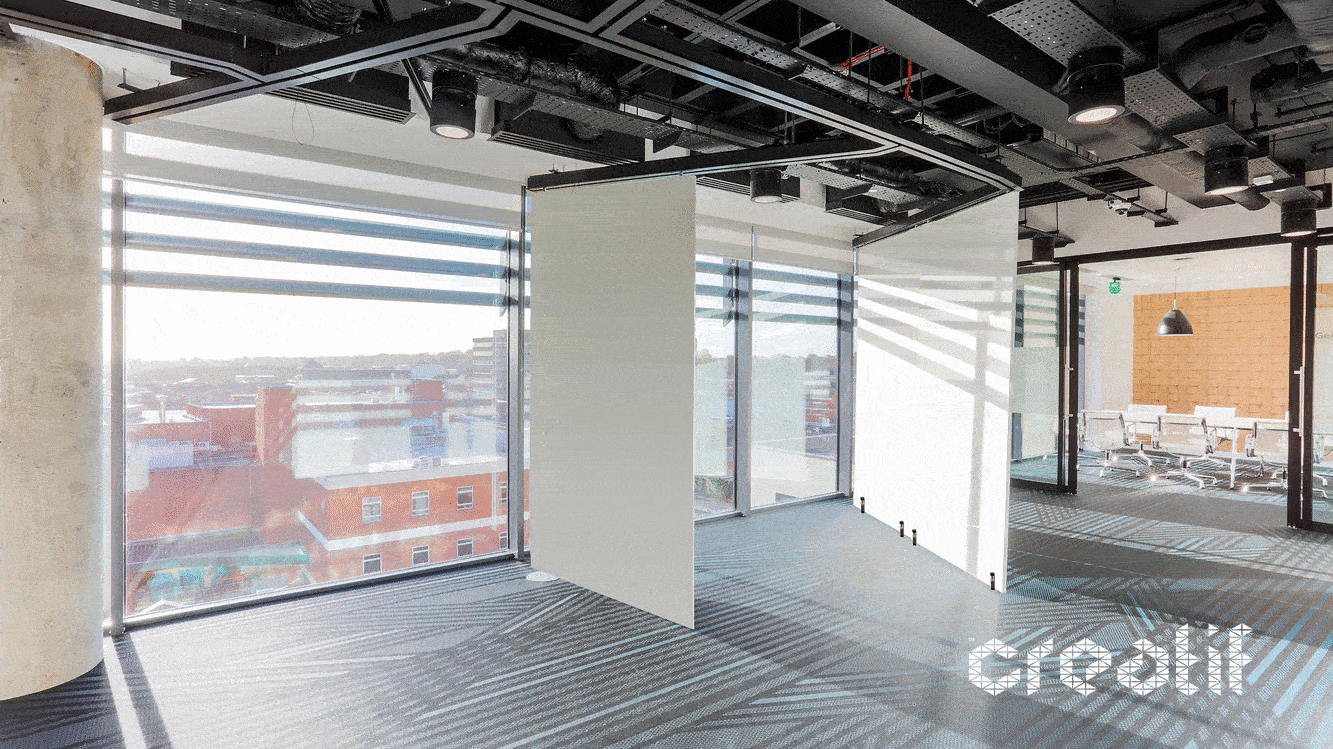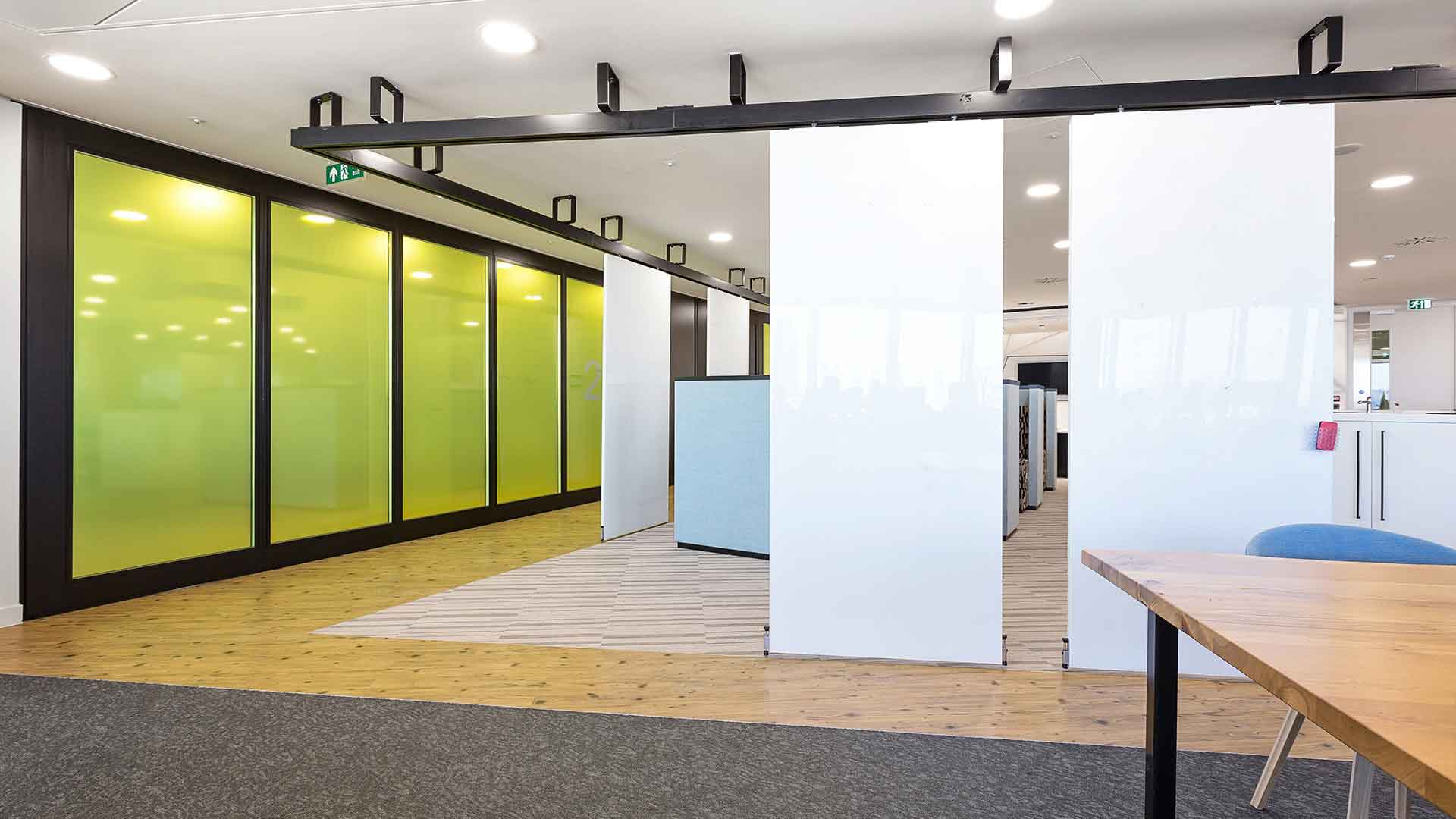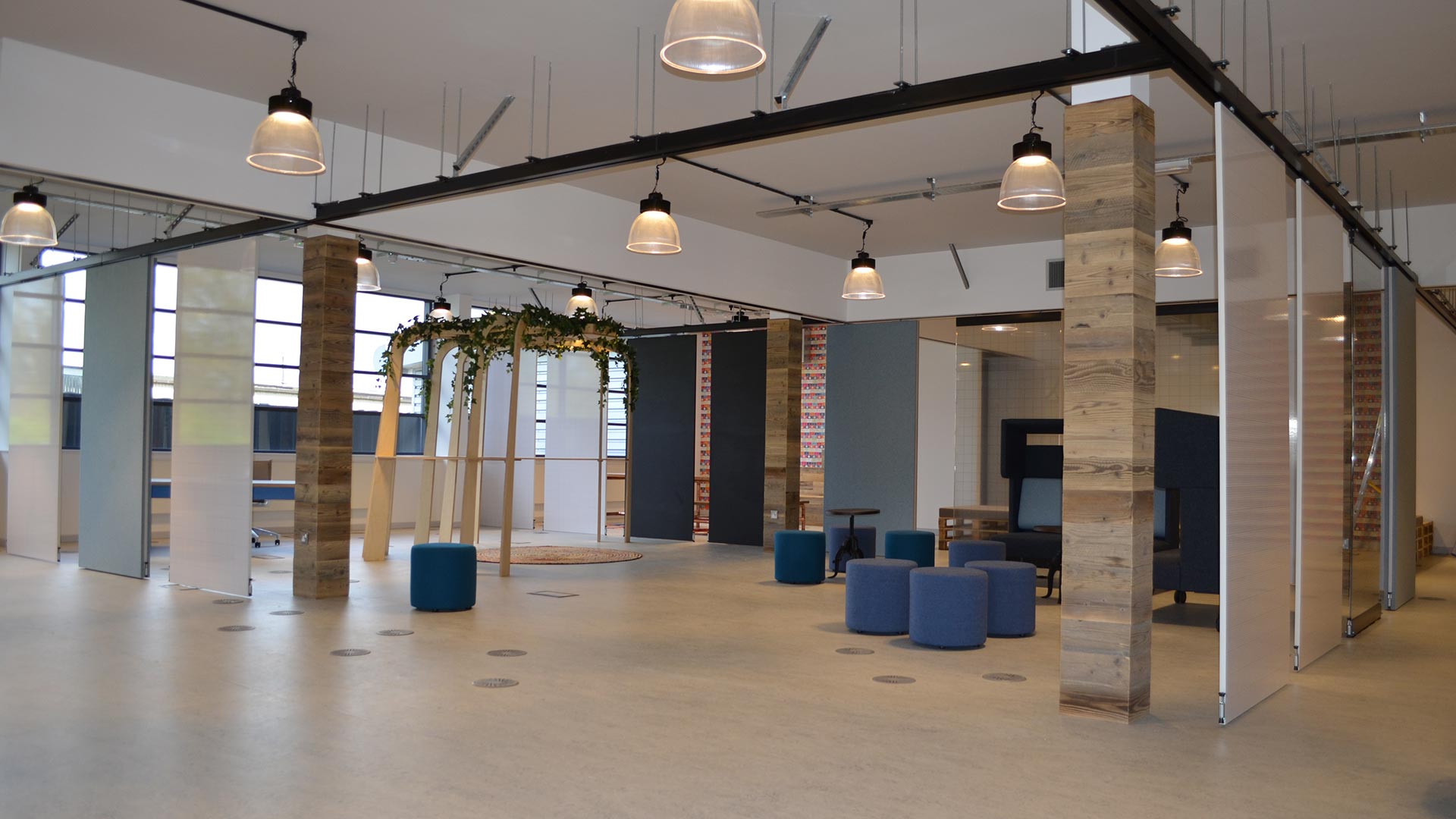Float Agile Sliding Panels - Supporting Agile & Hybrid Work Models
Agile, Activity-based and, more recently, Hybrid-working models are all about empowering employees – giving them the work environments and spaces they need to achieve the task at hand.
It’s providing the workforce with freedom (and boundaries – ideally flexible ones) to decide how, where and when to work – with whom to collaborate with, how to innovate, where to inspire… all with a view to achieving efficient work output and the best possible outcomes for the business.
People need work environments and settings that support what they are doing. The one-size-fits-all approach to workspace does not work – applying a straight-jacket concept to the workspace is restrictive and only stifles productivity, creativity, collaboration, and bottom-line financial performance. Companies are understanding this, hence the rapid increase in take-up of agile and activity based working environments now with the added functionality of the ability to reconfigure to suit hybrid situations.
Creatif are working at the forefront of modern workspace – engaged with the market’s leading workspace analysts, consultants and interior designers. We are producing products that are making the ABW concept more and more possible. Whilst we have many products we can talk about, this article is focusing on the increasingly popular Float – it looks into why Float is being used in ABW environments, and challenges the rationale behind this unique concept.
So, what really is Float? If you close your eyes and think of the word “Float”, what comes to mind… a boat serenely drifting on a still lake, a champagne cork bobbing about on a choppy sea, or a fish efficiently gliding through the ocean water… these are all allusions to what Creatif’s Float sliding panels system is – a lightweight panel, that drifts/glides/slides through the space, supported at the head by a track and secured in place by use of a foot-bolt or brush strips. Float is the perfect agile working buddy – it’s there when you need it, where you need it and can be used how you need it.
Next question… why is Float being used in agile and hybrid environments? That’s an easy one to answer: because it serves many purposes that can be summarised in two simple ways:
1. Float can be slid into place anytime, anywhere – it’s at the users’ disposal. There when its needed, and out of sight when not. Creating informal third-space areas, providing a surface to write/stick/project on or simply segregating a town-hall space in the centre of open-plan.
2. Can be used anyhow – Float panels are available in a fine array of finishes such as (and not limited to) magnetic, drywipe, decorative, acoustic, glass……the list goes on.
Now let’s take a look at Float in the context of modern workspace. How are interior designers and architects using Float to support and assist fluid and agile/hybrid spaces?
Float panels were implemented in this open-plan workspace to provide a flexible project area. Mellow polyester acoustic panels mixed with drywipe panels created writing space as well as providing some level of acoustic absorption for a great sound experience.

Similarly, Creatif were approached by a designer working for one of the world’s best known mobile phone manufacturers. The designer had created an area that was designed to work as a flexible gallery – visitors would become exposed to the latest phone models by way of signage applied to magnetic panels that could be slid through the space on tracks configured to enable a completely flexible layout. Float achieved this perfectly, as can be seen here:

This town-hall / breakout type area was situated in the middle of the open-plan workspace area. Float drywipe magnetic panels were located around this space to provide flexible and reconfigurable segregation, and a surface for writing on and sticking to for an enhanced collaborative experience:

Another recent requirement was for Float to create separate project spaces that could be opened, closed and re-configured in minutes – 30x Float panels configured on tracks achieved the required arrangement. Some of the panels were clad with ReSolve Class A absorbency panels, others were chalkboard surface and some were drywipe magnetic for added functionality.

If you are wondering how and whether Float can benefit your project, the answer is probably yes it can. As it is so versatile we are yet to come across a situation where Float cannot perform. Please utilise Creatif’s free design service by contacting our Workspace Consultants today.